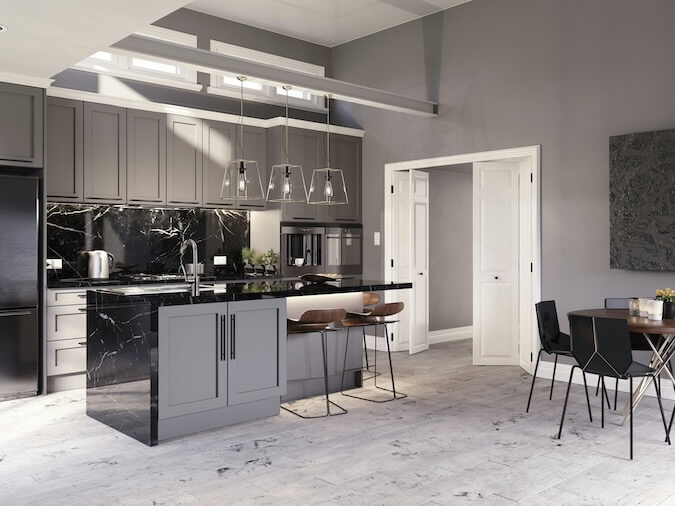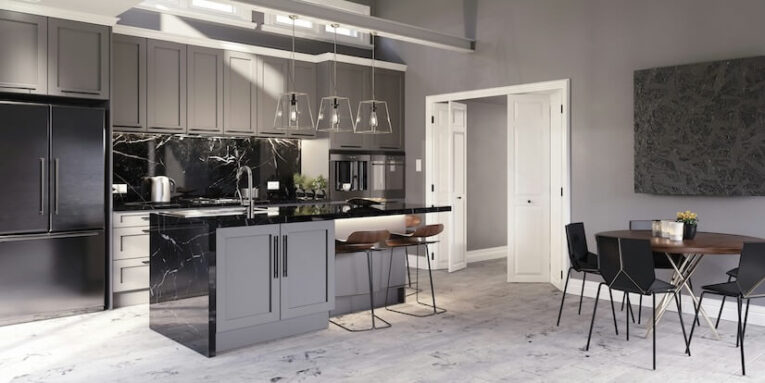The kitchen has always been more than a place to cook. It’s where conversations spill over while dinner simmers, where school projects spread across the counter, and where coffee rituals set the tone for the day. Making the kitchen feel like the true center of a home requires more than appliances and cabinetry. It takes thoughtful design, smart choices, and a sense of how people really live in the space.

Designing For Comfort And Connection
A kitchen works best when it doesn’t feel like a showroom but instead like a gathering space that welcomes people in. Soft seating, open sightlines, and layered lighting can make a difference. Instead of focusing only on the technical side of appliances, consider the lived-in aspects: how the room feels when people wander in at night for a snack, or when a group gathers at the island to help prepare dinner. Comfort should guide the design as much as aesthetics.
People are spending more time at home than ever, and the kitchen has taken on new roles. It might double as a makeshift office during the day or become a homework zone in the evening. Integrating design elements like built-in desks, breakfast nooks, or banquettes creates pockets of flexibility without forcing the room into a rigid template. It’s this adaptability that turns a kitchen into a true hub of connection.
Making The Space More Energy Efficient
A kitchen is one of the most energy-demanding areas in any house, but it’s also where improvements show up on utility bills almost immediately. Swapping older appliances for newer models can make the entire home feel more energy efficient, from the refrigerator that no longer hums all night to induction cooktops that heat faster and waste less power. But energy efficiency doesn’t have to stop at appliances.
Consider the details that get overlooked, like switching to LED under-cabinet lighting or adding a smart thermostat that learns the patterns of how and when you cook. Even the flow of natural light matters. A skylight or a larger window can reduce reliance on artificial lighting during the day while also making the room feel expansive and alive.
Homeowners who want long-term impact often look at water-saving dishwashers, touchless faucets, and better insulation around exterior kitchen walls. These changes make the kitchen not just practical but forward-thinking, built to last in a world where sustainability is more than a buzzword.
Investing In Storage That Actually Works
A kitchen becomes frustrating the moment storage fails. Drawers that catch, cabinets that don’t fit odd-shaped pans, or pantries that swallow ingredients until they expire all chip away at how inviting the space feels. Functionality here matters just as much as style.
Pull-out shelving, lazy Susans in corner cabinets, and dedicated storage for baking sheets or cutting boards eliminate the daily irritation of digging through clutter. Deep drawers under counters can hold pots and pans at waist level instead of stacked awkwardly overhead. A walk-in pantry or a cleverly designed tall cabinet can serve as a central command station for groceries, small appliances, and even pet food.
These adjustments prevent the kitchen from becoming chaotic. A well-planned storage system encourages cooking, hosting, and lingering in the room because everything you need is at hand. It’s a simple truth: when storage works, people use the kitchen more—and enjoy it.
Building Beauty With Custom Craftsmanship
There’s something transformative about cabinetry that feels made for the home rather than tacked on after the fact. Whether it’s custom cabinets in Scottsdale AZ, Richmond VA or anywhere in between, going with a reputable provider is key. Beyond just aesthetic appeal, quality cabinetry solves design challenges by fitting seamlessly into unusual layouts and maximizing awkward corners.
Craftsmanship adds a tactile dimension that prefabricated pieces can’t always match. Solid wood, dovetail joints, and hand-finished surfaces give a kitchen a warmth that reads as lived-in rather than generic. Thoughtful cabinetry design might include glass panels to display heirloom dishes, hidden charging stations to keep cords out of sight, or appliance garages that make blenders and toasters disappear when not in use.
The investment pays off not only in day-to-day enjoyment but also in long-term property value. A kitchen with bespoke details resonates with buyers because it shows care, foresight, and a sense of permanence.
Blending Technology With Tradition
Technology in the kitchen has moved well beyond microwaves and timers. Today’s smart appliances allow remote preheating of ovens, refrigerators that generate grocery lists, and even coffee machines you can start from bed. But balance is important. Too much emphasis on gadgets risks making the kitchen feel more like a laboratory than a place to relax.
The sweet spot is combining innovation with timeless design. A farmhouse sink looks as classic as ever but pairs beautifully with a sensor faucet. Natural stone countertops ground the room while induction ranges bring modern precision. Hidden speakers can stream music during dinner parties without intruding on the aesthetics.
When technology is integrated thoughtfully, it enhances how the kitchen is used without stealing the spotlight. It becomes the quiet support that lets the social and sensory experiences of cooking and eating shine.
Creating Atmosphere Through Small Details
Even the most expensive renovation falls flat if the atmosphere doesn’t feel right. The kitchen thrives on warmth, and that comes from details both subtle and obvious. Think of textures—woven barstools, linen curtains, or ceramic pendant lights—that bring a sense of depth. Consider scent, too: fresh herbs on the windowsill or citrus in a bowl can make the room feel alive.
Color plays its role, and it doesn’t have to mean stark white or trendy matte black. Soft greens, natural wood tones, or even deep blues can create an environment that feels both calming and engaging. Music, lighting dimmers, and seasonal decor touches shift the mood of the room without major expense.
The best kitchens don’t just look polished; they feel lived in. They tell stories through mismatched mugs collected over the years or the worn cutting board that has seen countless family meals. These details remind everyone that the kitchen is not just a showcase but the backdrop to daily life.
Where Everything Comes Together
Turning a kitchen into the center of everyday living isn’t about chasing one design trend after another. It’s about shaping a room where comfort, efficiency, and beauty align with how people actually live. Whether through smarter energy choices, storage that makes sense, craftsmanship in cabinetry, or the right blend of technology and atmosphere, the kitchen becomes more than a place to cook. It becomes the pulse of the home.
People also read this: What Makes Relocating an Office Stress-Free In 2025?

